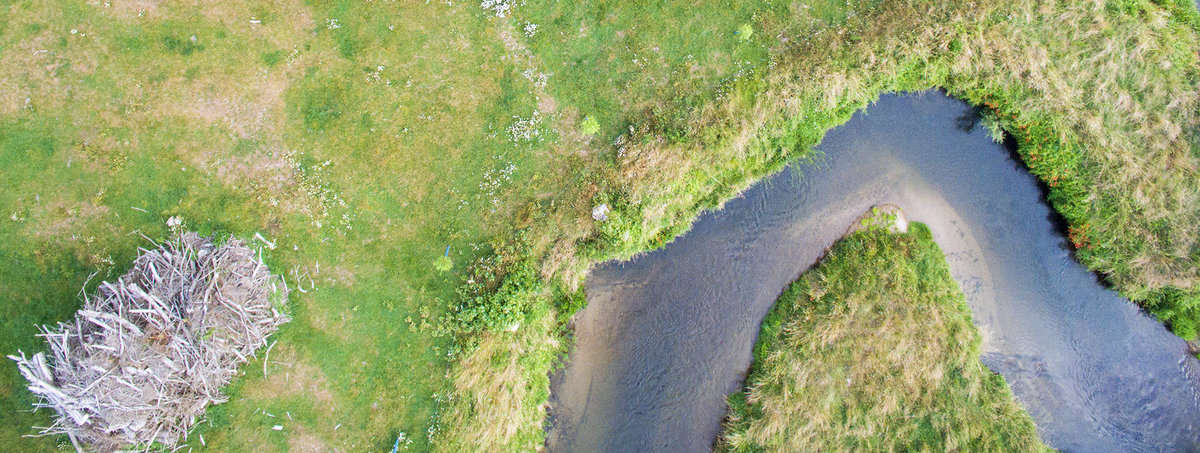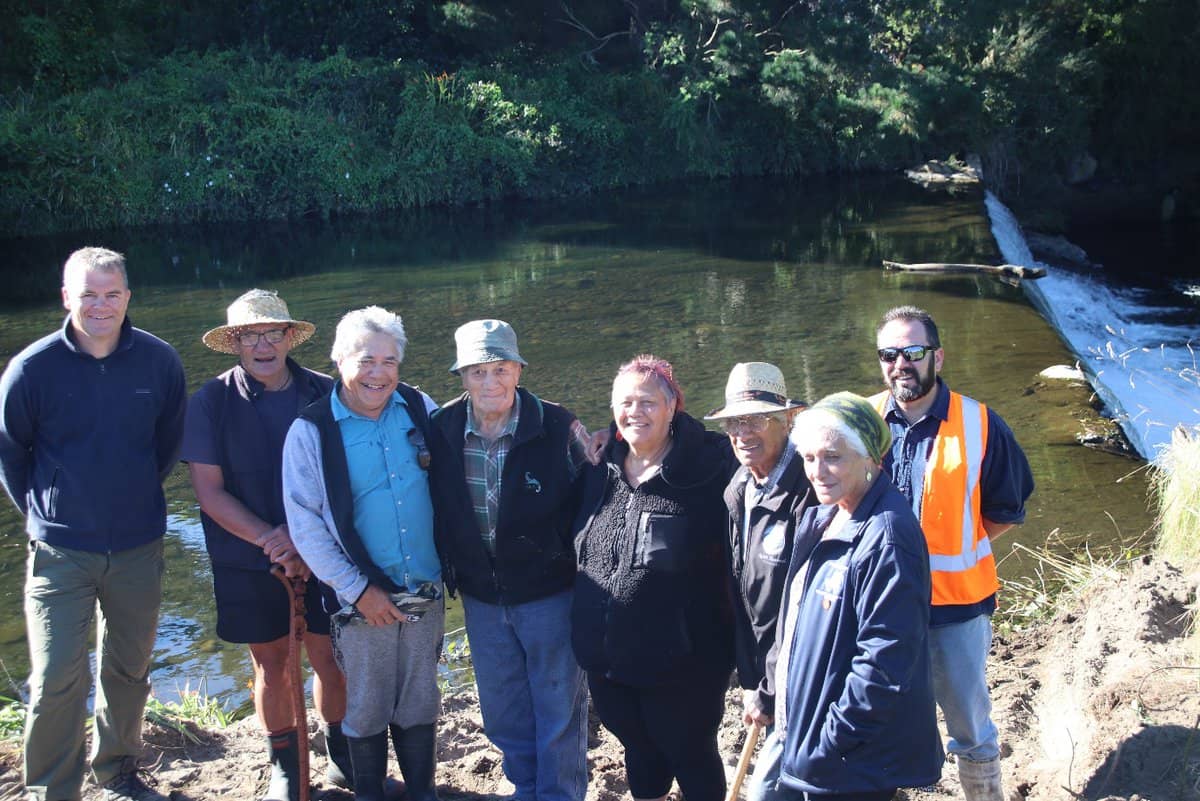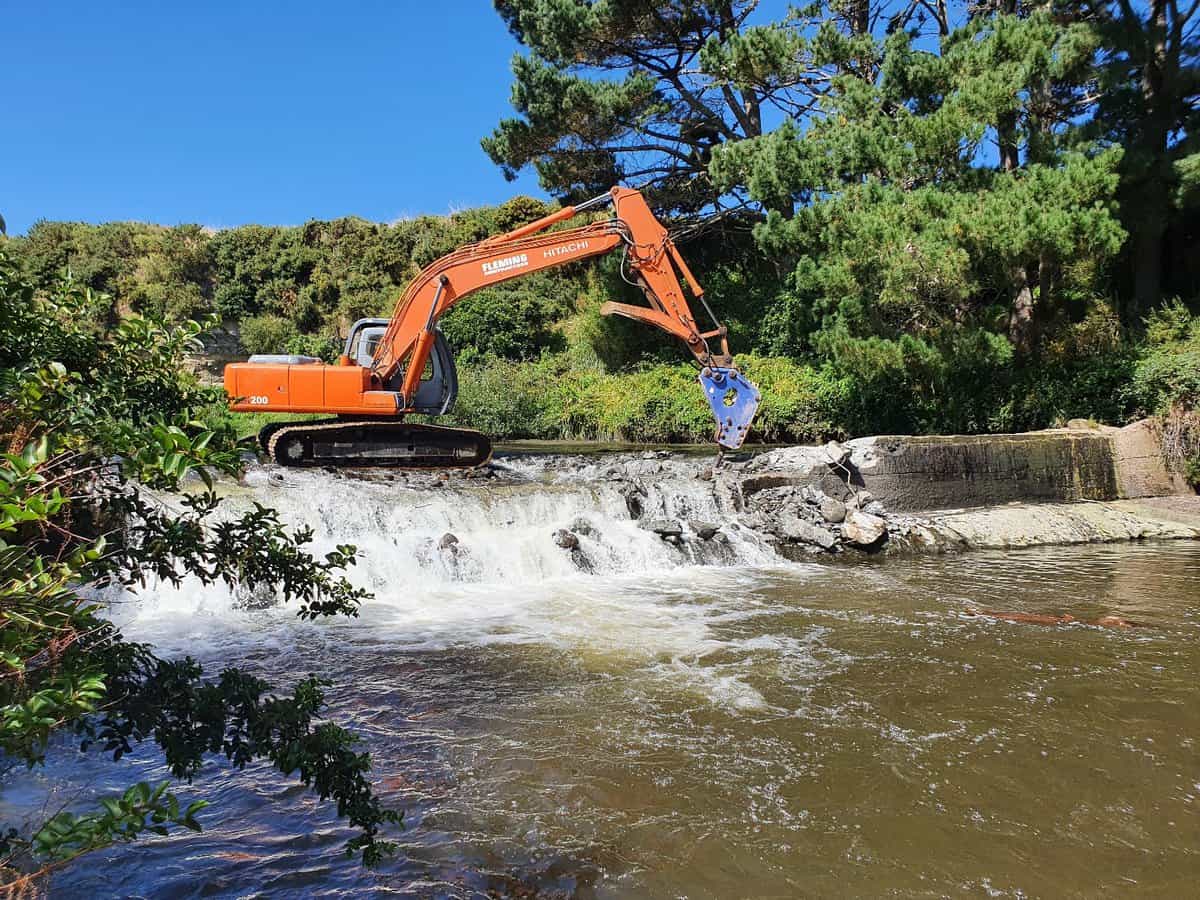Kaūpokonui River Story

Kaūpokonui River Story
Fish can move freely up and down Kaūpokonui Stream for the first time in 120 years thanks to the removal of a disused weir. Te Korowai o Ngāruahine Trust led the charge to remove the 3m high weir, which is located on private land, about 5km off the coast of South Taranaki…
Fonterra Kāpuni, Taranaki Fish and Game, South Taranaki District Council and the Taranaki Regional Council also contributed to the project.
Up to fifteen native fish species may have been affected by the weir, and they will no longer have to jump or climb (which was previously the only option for fish passage) to navigate their way upstream says Paddy Deegan, TRC Freshwater Environmental Scientist.
“The weir was preventing access to a significant amount of habitat for many of these species, some of which are threatened or at risk of population decline,” Paddy Deegan says.
“Many fish aren’t great climbers or jumpers, so with the weir removed fish can once again move freely up and downstream.”
“Even one of our most athletic fish, the lamprey (piharau), struggled to navigate the weir, which sadly resulted in the death of over 100 adults in 2020.”
“We expect that the number of species present in the stream and its tributaries above the old weir will increase, and fish numbers will grow overall.”
Investigation into getting rid of the weir began in 2001, so the March 2021 removal was a huge milestone that was celebrated by all those involved with the project, explains Bart Jansma, Te Korowai o Ngāruahine Trust Environmental Policy Advisor.
“It’s cool that fish who haven’t been able to get upstream for many, many years, will now be able to.”
At the blessing ceremony Henare said ‘We have an important job to do here. With a bit of care and a bit of prayer, things will work out well. The dam is worth talking about.’
Another attendee, Boyce Luke, recalled swimming and fishing in the river as a boy.
Marie Dwyer was also present. Her grandfather built the current weir in 1941 to replace the original which had been in place since 1900, and was happy to be present. She shared stories of her grandfather’s experience building the weir, and others like it around Taranaki.
In the days leading up to weir demolition, numerous eels were captured by hīnaki (eel trap) and released further downstream so that they were not harmed during the process. Monitoring results since the weir’s removal have indicated the intervention has had an immediate positive impact. Sampling in the Kaūpokonui has detected piharau, smelt, inanga, torrentfish, kōaro, and tuna (both longfin and shortfin eel) above the old weir. Council staff consider this to be a good sign, and hope to see a big migration upstream this year and successful spawning throughout the upper catchment in the years to come.
Taranaki Regional Council-Director Operations, Dan Harrison, said the weir demolition was probably the biggest single intervention to improve outcomes for the region’s native fish, and that there were more weirs around the region causing similar problems for fish passage.
“We were happy to work alongside iwi and hapū to support removal of this weir. It will have a massive positive impact on the number and types of fish seen in this and surrounding streams in years to come.”

